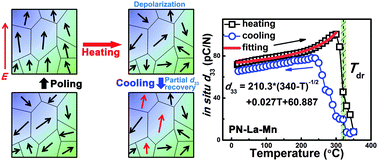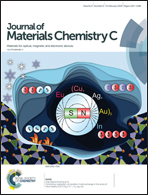Revealing the real high temperature performance and depolarization characteristics of piezoelectric ceramics by combined in situ techniques
Abstract
Real-time high temperature (HT) piezoelectricity is a rarely reported yet unclear issue in piezoceramics despite its great significance in a broad range of modern piezodevices. Here the piezoelectricity and ferroelectricity of various piezoceramics with different Curie temperatures (TC) in both heating and cooling cycles are investigated by using a unique in situ HT piezoelectric d33 meter and a ferroelectric analyzer to understand the ‘real’ HT performance and thermal depolarization of the materials. The real HT d33 of the samples, including a conventional PrZrTiO3, bismuth based high TC perovskites, and a codoped tungsten bronze type PbNb2O6-La-Mn, always showed an accelerating increase, and a succedent sharp drop provided a new ‘real-time’ depolarization temperature (Tdr) different from usual ex situ characteristic temperatures from annealing measurements and permittivity curves. Such exceptional profiles enable a new model to be directly constructed based on the phenomenological framework, which can easily extract the usually puzzling extrinsic piezoelectricity due to domain walls. The polarization derived from the rather good simulation also agrees well with HT ferroelectric loops. These indicate that the HT d33 is controlled by both free energy flattening related to intrinsic ferroelectricity and thermally activated extrinsic piezoelectricity. The d33 profiles upon cooling further revealed a distinct piezoelectricity recovery in PbNb2O6-La-Mn, which was well explained by Mn induced defect-dipoles. The observed fluctuation of HT piezoelectricity and the derived temperature dependence of intrinsic and extrinsic contributions and a microstructural change may provide a new insight into the design and development of reliable high temperature piezoceramics and devices.



 Please wait while we load your content...
Please wait while we load your content...